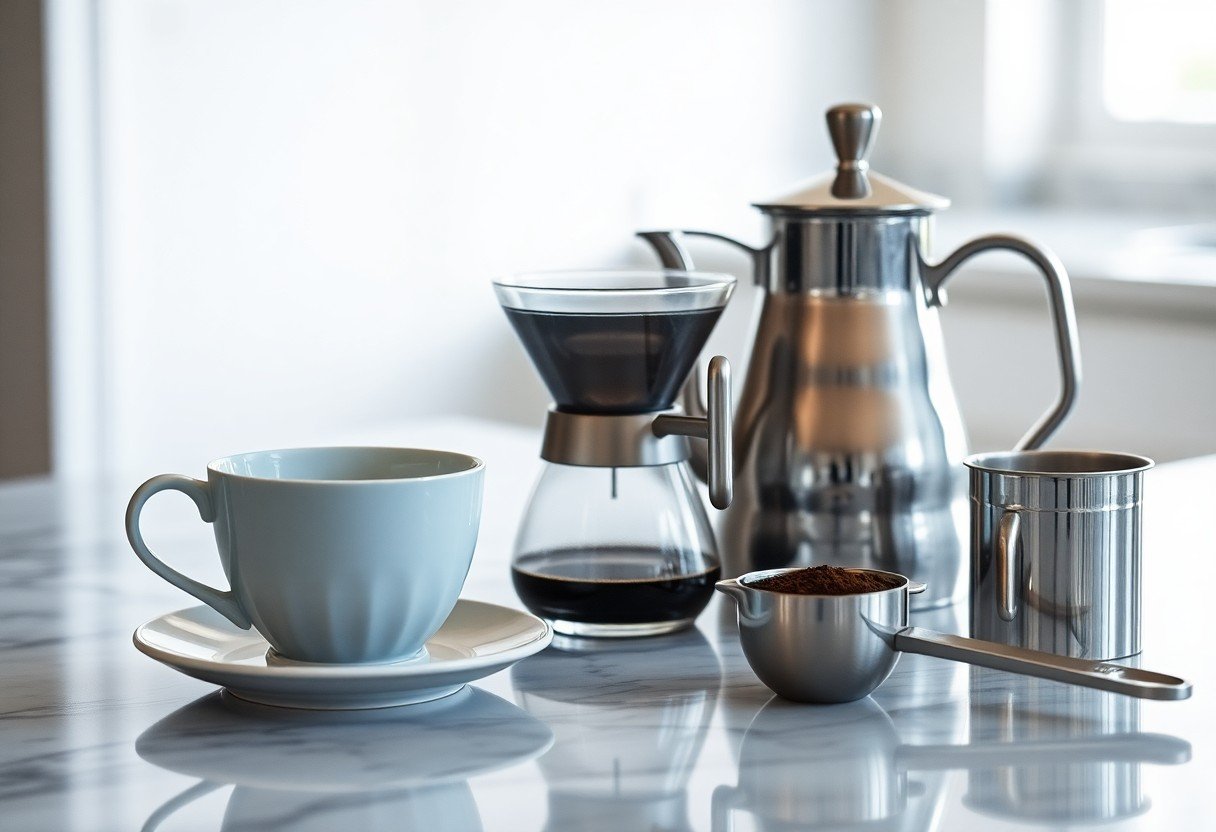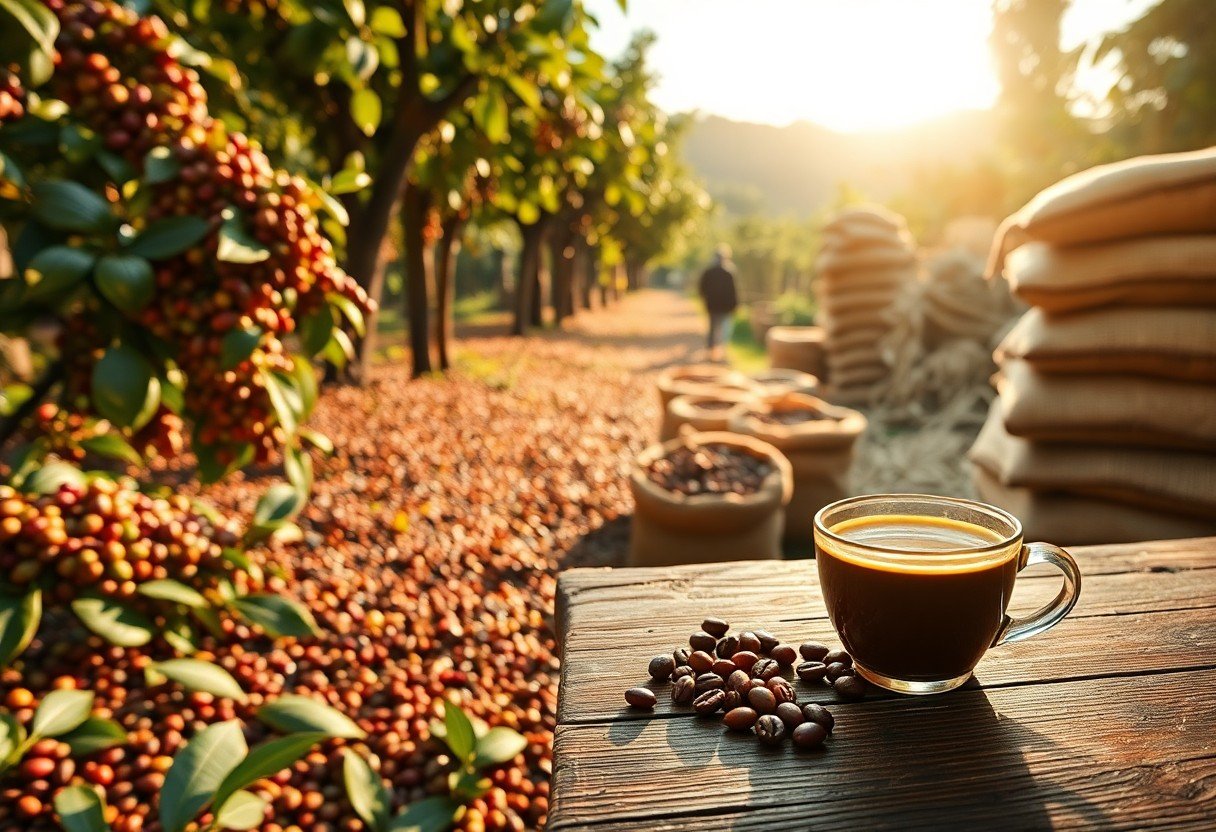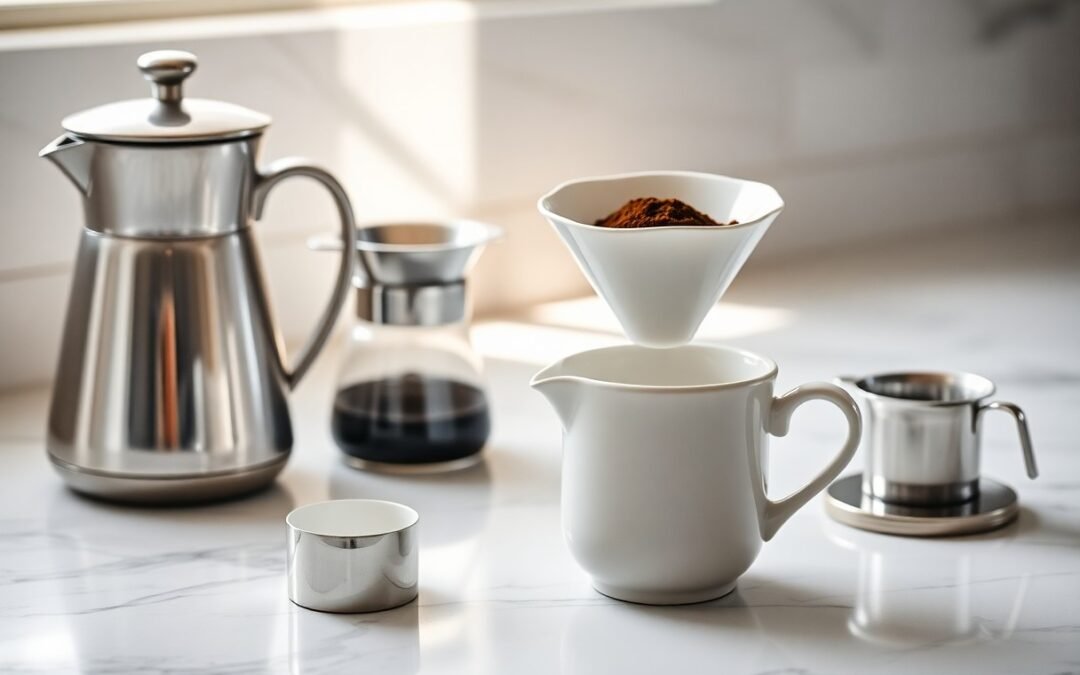Quintessence lies in the nuanced techniques that elevate your cup to an extraordinary experience. By honing in on specific brewing methods, selecting high-quality ingredients, and mastering temperature control, you can unlock a depth of flavor that transforms the ordinary into the remarkable. This guide will reveal the often-overlooked practices that will refine your approach, ensuring each sip reflects your expertise and appreciation for the art of crafting a sophisticated cup.
The Alchemy of Ingredients
The art of crafting a sophisticated cup centers on the careful selection and orchestration of ingredients. Your choice of beans, water quality, and any additional flavors all contribute to the final experience. Each element interacts synergistically, ultimately shaping the character of your brew. As you explore varying combinations, subtle complexities unfold, revealing the hidden depths of flavor that distinguish a mediocre cup from an extraordinary one.
The Role of Quality Beans
Your coffee’s foundation lies in the quality of the beans. Sourcing from reputable farms that prioritize sustainable practices and expert cultivation directly influences flavor. Look for beans grown at high altitudes, as these often develop more complex flavor profiles. Specialty-grade beans undergo rigorous grading, so opting for these ensures you’re starting with ingredients that can elevate your brewing experience.
Unseen Flavor Profiles: The Art of Blending
Blending various beans creates a harmonious profile that can be tailored to your preferred taste. Each variety possesses unique attributes, and when combined skillfully, they contribute layers of flavor. A well-balanced blend might introduce notes of chocolate and fruit, together crafting a rounded cup. This alchemical process transforms ordinary beans into something extraordinary, giving your brew a distinct character that evolves with each sip.
Mastering the art of blending requires experimentation and a refined palate. Consider the origin of your beans, as Ethiopian varieties might highlight floral and fruity notes, while Brazilian beans bring a nutty richness. A successful blend often includes beans that complement one another; for instance, pairing a bright, acidic coffee with a smooth, chocolatey counterpart can achieve a balanced cup. Utilize cupping techniques to explore flavor nuances and refine your blending skills, allowing you to discover the perfect synergy that resonates with your taste preferences.
Precision Brewing Techniques
Mastering the art of precision brewing techniques significantly shapes the flavor profile of your cup. Achieving consistency in every brew requires meticulous attention to detail, including measuring coffee grounds, water, and brew time. Employing calibrated brewing equipment can enhance your results, ensuring that each cup resonates with the intended taste nuances. By employing specific methods suitable for various brewing styles, you can extract the perfect balance of acidity, sweetness, and body.
The Impact of Water Chemistry
Water chemistry plays a pivotal role in extracting flavors from coffee. Your local water’s mineral content determines how effectively it interacts with coffee grounds, influencing taste and aroma. For instance, water with higher calcium levels enhances extraction, yielding a fuller-bodied cup, while overly soft water can result in flat flavors. Tailoring water chemistry using filtration or additives can lead to a more refined flavor profile in every brew.
Optimal Brewing Temperatures and Times
The temperature and duration of your brewing process directly affect extraction and flavor clarity. Generally, brewing temperatures between 195°F to 205°F (90°C to 96°C) are ideal, as they facilitate proper extraction without scalding the coffee. Additionally, varying brew times based on the method, like 4-5 minutes for pour-over and 30 seconds for espresso, allows you to fine-tune the taste. Adjusting these parameters can unveil hidden flavor notes, elevating your overall coffee experience.
| Brew Method | Ideal Temperature |
| Pour-Over | 195°F – 205°F |
| French Press | 200°F |
| Espresso | 198°F – 204°F |
For optimal results, align your brewing method with the right temperature and time. Pour-over usually requires a careful pour and a brewing time of approximately 3 to 4 minutes, allowing for even extraction; while French Press, steeped for about 4 minutes, delivers robust flavors. Espresso demands precision—a quick extraction of just 25 to 30 seconds delivers concentrated flavors. Adjusting these variables can reveal diverse tasting notes in your cup, leading to a more enjoyable experience.
| Brew Method | Recommended Brewing Time |
| Pour-Over | 3-4 minutes |
| French Press | 4 minutes |
| Espresso | 25-30 seconds |

Elevating Presentation: The Visual Experience
The presentation of your cup significantly enhances the overall experience, turning a simple beverage into an indulgent ritual. Aesthetically pleasing elements like color contrasts, unique patterns, and elegant serving styles engage the observer’s senses even before the first sip. You can create a captivating setup by choosing the right tableware and incorporating complementary elements like saucers or gourmet snacks, which invite admiration and anticipation for what’s to come.
The Influence of Cup Design on Perception
Your choice of cup design can shape how others perceive not just the beverage, but also the entire experience. For instance, a delicate porcelain cup may evoke feelings of refinement, while a robust stoneware mug might symbolize comfort and home. Research shows that visual aesthetics can trigger emotional responses, influencing your enjoyment and appreciation of the drink itself.
The Psychology of Aromatics and Senses
Aromatics play a pivotal role in your sensory enjoyment, engaging your sense of smell before you even taste your beverage. The aroma released from a freshly brewed cup can alter your perception of flavor; for example, notes of chocolate, fruit, or spices can heighten anticipation and enhance satisfaction. This olfactory connection creates a multi-sensory experience that makes the drink memorable.
Engaging the olfactory senses enhances the entire drinking experience, as studies indicate that 75% of taste is linked to smell. This interplay means that focusing on the aromatics allows you to heighten your overall appreciation. Big flavors can seem more vibrant when you breathe in the rich bouquet of aromas first. Consider how varying temperatures can intensify or diminish certain scent notes, dramatically influencing what you ultimately experience with each sip you take.
Cultivating Rituals: The Power of Mindful Consumption
A sophisticated cup is not merely about flavor; it embodies the entire experience of consumption. Engaging in mindful rituals around your beverage fosters a deeper connection to each sip, allowing you to appreciate the intricate nuances of taste and aroma. By slowing down and savoring these moments, you transform routine drinking into an almost meditative practice, enhancing your enjoyment significantly.
The Role of Ambiance and Environment
Your surroundings play a pivotal role in shaping your drinking experience. Soft lighting, comfortable seating, and calming music can create an inviting atmosphere that encourages relaxation and focus. Consider curating your space with natural elements, like plants or wooden decor, to enrich your sensory experience while enjoying your drink, enhancing both flavor and perception.
Daily Routines that Enhance the Experience
Incorporating simple yet intentional daily routines can significantly heighten your enjoyment of every cup. Set aside time each day to brew your drink, ensuring that you are fully present in the moment. This could involve selecting your favorite mug, experimenting with different brewing techniques, or even journaling about the flavors you encounter. Such practices not only enhance your appreciation but also transform your beverage ritual into a cherished part of your daily life.
Daily routines can be as diverse as the ingredients you choose. For example, dedicating morning time to brew a rich coffee while enjoying a few moments of silence can transform your mindset for the day ahead. Alternately, pairing your evening tea with a reflective activity like reading can create a calming ritual that signals the end of the day. By consistently incorporating such specific practices, you elevate each cup into a personal tradition that nourishes both body and mind.

From Bean to Brew: Sourcing and Sustainability Insights
Understanding the journey from bean to brew allows you to appreciate not just the flavor, but also the principles of sourcing and sustainability that shape your coffee experience. Each cup tells a story of where and how the beans are grown, emphasizing the importance of ethical practices in the coffee industry. By choosing coffee that is sourced sustainably, you not only enjoy a superior flavor profile but also contribute to the well-being of farmers and ecosystems worldwide.
Ethical Sourcing and Its Impact on Flavor
Ethical sourcing greatly influences the flavor of your cup. Coffee grown under fair trade practices often results in better care for the beans, leading to a more complex and vibrant flavor profile. Farmers who receive fair compensation have the incentive to invest in quality, using methods that enrich soil health and enhance the overall taste, allowing you to savor nuances that reflect the region’s unique characteristics.
The Environmental Footprint of Coffee Production
The environmental footprint of coffee production is significant, impacting biodiversity and water resources. Traditional farming methods often lead to deforestation and soil degradation, affecting ecosystems that rely on these habitats. Sustainable practices, such as agroforestry, can mitigate these impacts, preserving biodiversity while promoting healthier soil. The choice to support environmentally-conscious brands helps lessen this footprint while ensuring that you enjoy a high-quality beverage.
Farming methods significantly influence coffee’s environmental impact, particularly regarding land use and resource consumption. Conventional coffee cultivation, often characterized by monocultures, leads to deforestation and loss of wildlife habitats. In contrast, sustainable approaches like shade-grown coffee enhance biodiversity and help maintain soil health, utilizing less water and chemicals. By selecting coffees certified organic or grown through agroforestry, you not only enjoy a richer cup but also support regenerating ecosystems that help combat climate change and preserve natural resources for future generations.
Summing up
With this in mind, understanding the hidden practices that enhance your coffee experience will elevate your brewing skills. By selecting quality beans, mastering precise techniques, and paying attention to every detail from water temperature to grind size, you unlock the potential for a refined cup. Exploring different brewing methods allows you to discover unique flavors and aromas, while proper storage preserves your ingredients’ integrity. Embrace these practices, and you’ll savor a sophisticated coffee that truly reflects your dedication to the craft.
FAQ
Q: What role does water quality play in brewing a sophisticated cup?
A: Water quality affects the taste and extraction process. Ideally, use filtered water free from impurities to enhance flavor and ensure a balanced brew.
Q: How does the grind size of coffee impact the brewing process?
A: Grind size influences the extraction rate. Finer grinds lead to quicker extraction, while coarser grinds slow it down, affecting flavor strength and balance.
Q: Why is brewing temperature significant for achieving flavor?
A: Brewing temperature impacts solubility of compounds in coffee. Optimal temperatures, typically between 195°F to 205°F, enhance flavor extraction without introducing bitterness.
Q: What is the importance of brew time in coffee preparation?
A: Brew time determines the depth of flavor extracted from the coffee grounds. Shorter brew times can result in sour notes, while longer times may lead to over-extraction and bitterness.
Q: How can coffee-to-water ratio affect the taste of the final cup?
A: The coffee-to-water ratio controls concentration. A higher ratio yields stronger flavor, while a lower ratio can result in a more diluted cup. Finding the right balance is necessary for sophistication.

